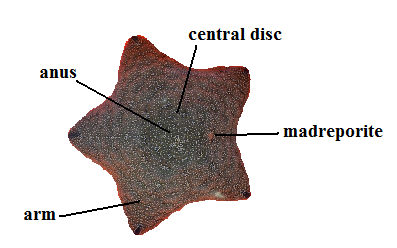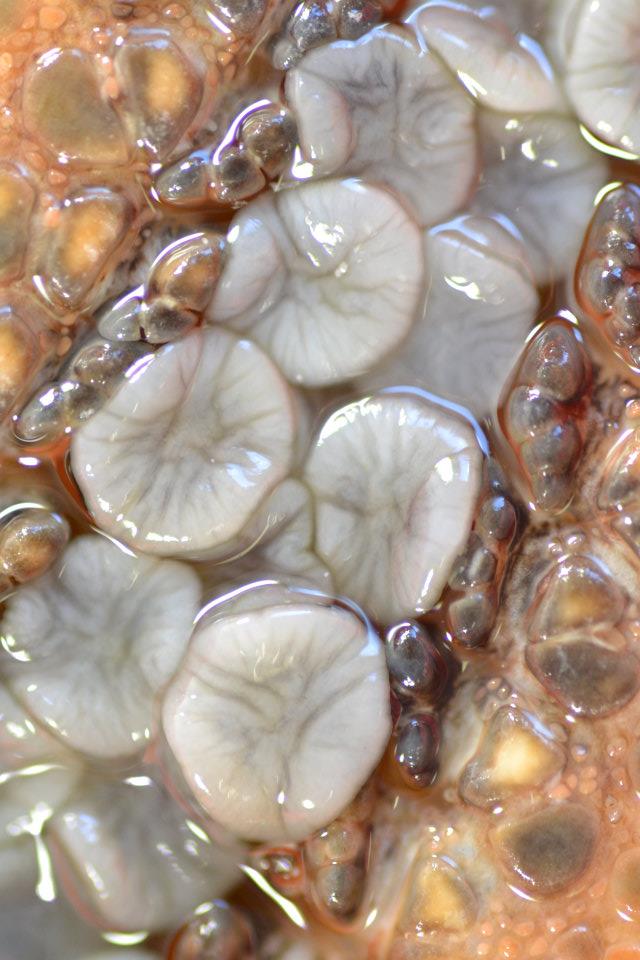External Morphology
Being an asteroid, this species has arms that are not distinct from a central disc. This species has very short arms that are even more graduated from the central disc than other asteroids. This species has a spiny calcareous endoskeletion , one of the features that makes puts it in the phylum Echinodermata. It also shows pentamerous radial symmetry in both juvenile and adult form (Hickman et al. 2008, Yamaguchi 1977). Larvae are bilaterally symmetrical (Hickman et al. 2008). It also has pedicellariae (pincher-like structures that remove debris), and dermal branchiae (used in respiration) (Hickman et al. 2008).
 
Its body plan runs along an oral aboral axis. Their mouth is centered on the under (oral) side.

 
Ambulacral grooves runs from the mouth along each of the arms. Along the insides of these grooves are tube feet.


These external tube feet are used in locomotion and also in prey capture and feeding. The tube feet are protected by spines.
The anus is situated on the upper (aboral) side.

The surface of the aboral side is rough and spiny. The water vascular system opens to the outside environment via the madroporite, located on the aboral side (Hickman et al. 2008).

 
|